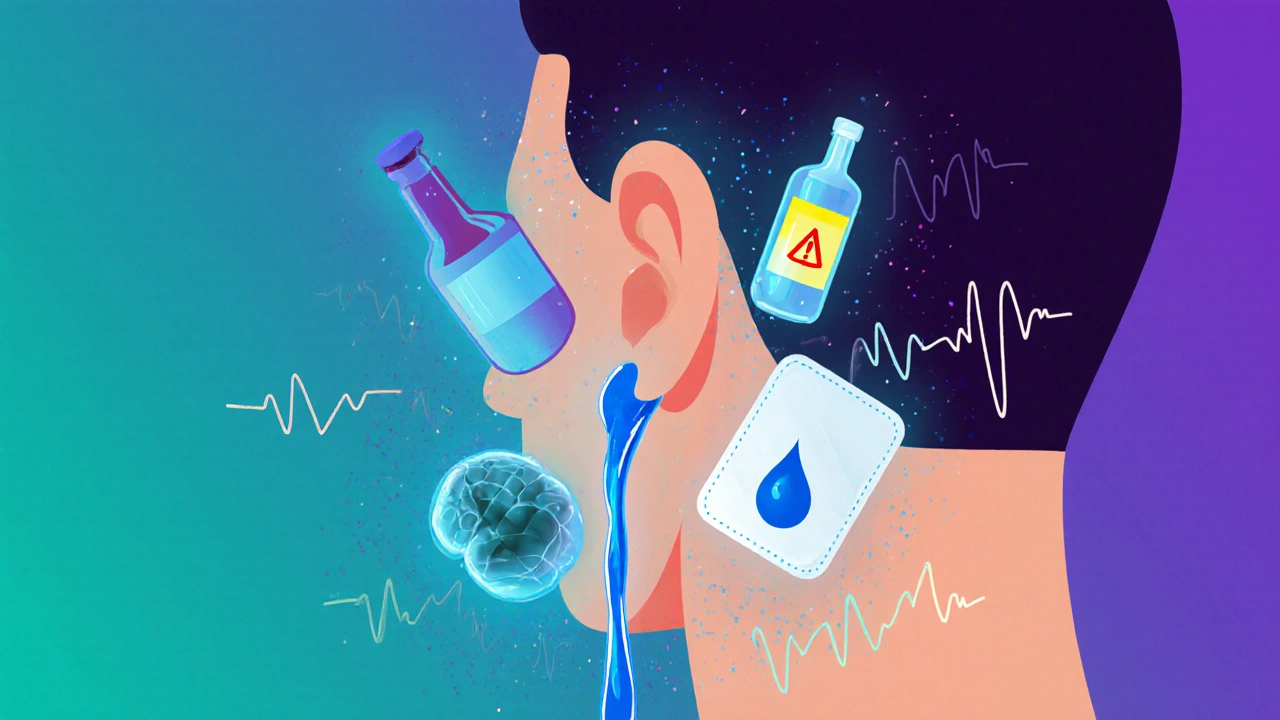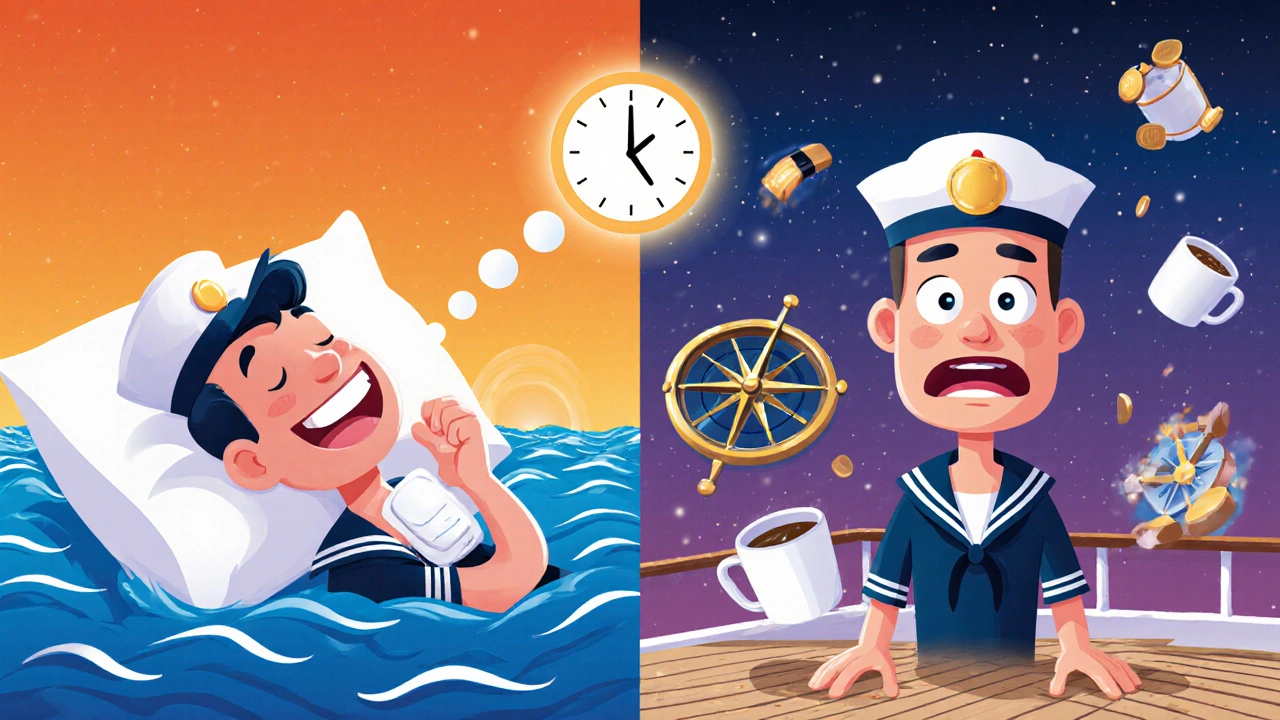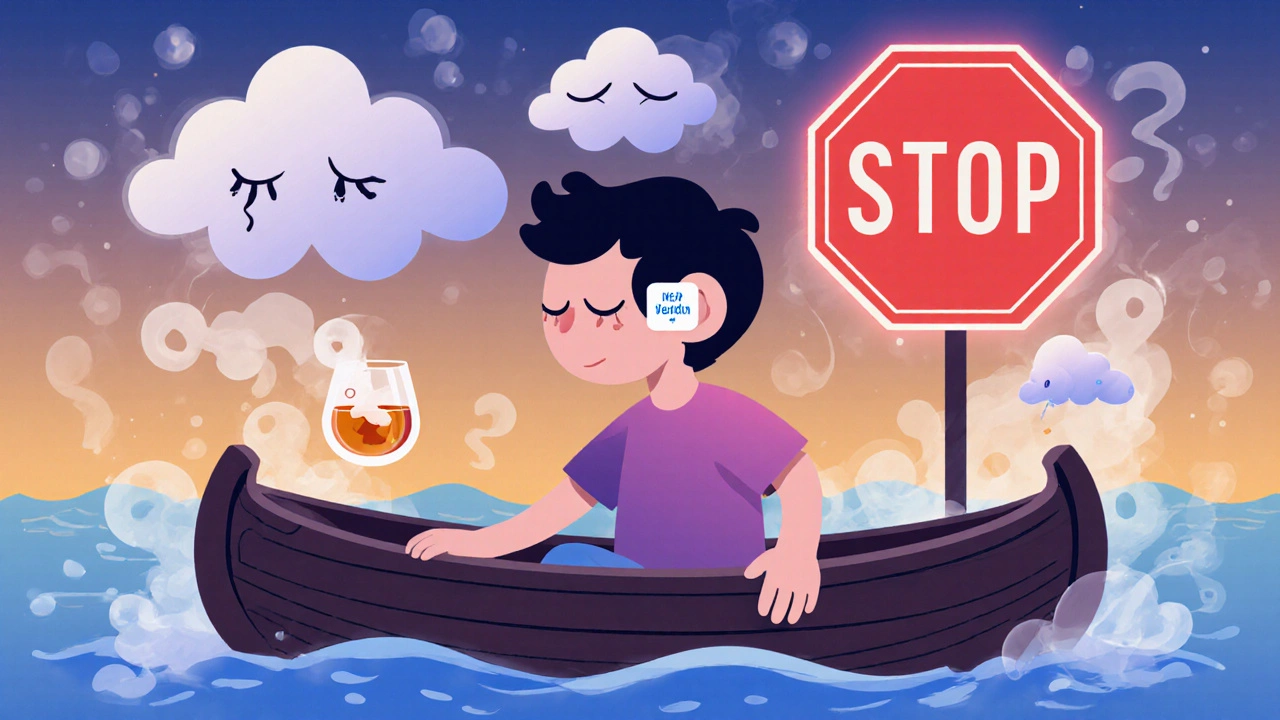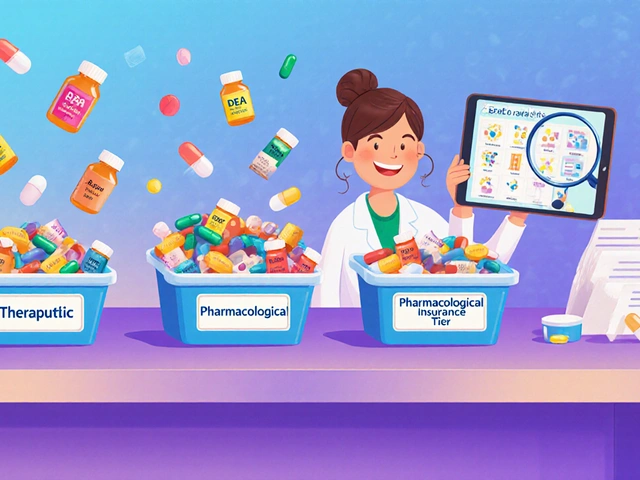Scopolamine Interaction Checker
Check Your Scopolamine Interactions
The scopolamine patch (Transderm Scōp) interacts dangerously with many common substances. Select items you're taking to see potential risks.
Results
When you’re on a boat, in a car, or even on a plane, motion sickness can hit hard - nausea, dizziness, sweating, and vomiting can turn a trip into a nightmare. For many, the go-to solution is the scopolamine patch. It’s effective, long-lasting, and used by sailors, pilots, and cruise passengers worldwide. But here’s the catch: it doesn’t just fight nausea. It also makes you sleepy. And when that sleepiness teams up with alcohol, sleeping pills, or even CBD, things can go wrong - fast.
How Scopolamine Actually Works
Scopolamine, also known as hyoscine, is a natural compound pulled from plants like jimsonweed and henbane. It’s been used since the early 1900s, and today, it’s on the World Health Organization’s list of essential medicines. That means it’s considered so important, every country should have it available.
The patch, called Transderm Scōp, sticks behind your ear and slowly releases 0.5 mg of scopolamine over three days. It starts working in about four hours and peaks around 24 hours. Unlike oral meds like Dramamine or Bonine, which need to be taken every few hours, this patch lasts. That’s why it’s the top choice for long flights, multi-day cruises, or military training.
It works by blocking acetylcholine - a brain chemical that triggers nausea when your inner ear senses motion your eyes don’t. But here’s the twist: scopolamine doesn’t just block nausea signals. It crosses the blood-brain barrier and messes with your central nervous system. That’s why you get drowsiness, dry mouth, and blurry vision. It’s not a side effect - it’s part of how it works.
Why Sedatives Are a Dangerous Combo
Scopolamine already slows down your brain. Add another CNS depressant - like alcohol, benzodiazepines (Xanax, Valium), opioids (oxycodone, hydrocodone), or even sleep aids like zolpidem - and you’re stacking the deck.
Research from the American Society of Anesthesiologists shows that people over 65 who take scopolamine with benzodiazepines have a 40% higher chance of slipping into delirium. That’s not just feeling foggy - it’s confusion, hallucinations, and sometimes falling or choking. In extreme cases, breathing slows dangerously. A 2023 rodent study found the risk of respiratory depression jumps 3.2 times when scopolamine is mixed with sedatives.
And it’s not just prescription drugs. People on Reddit and Drugs.com report that even one beer with the patch leads to severe disorientation. One marine researcher, who’s used the patch for 12 years, said he’s seen coworkers become so confused after a single drink they couldn’t find their way back to the ship’s deck.
Even newer products like CBD oil might be risky. A 2024 update from the American Medical Association warns that CBD inhibits the CYP3A4 liver enzyme - the same one that breaks down scopolamine. This can cause scopolamine to build up in your system, making sedation worse. If you’re using CBD for anxiety or pain, you’re not just adding a supplement - you’re increasing your drug load.
Real People, Real Consequences
Scopolamine gets a 6.2 out of 10 on Drugs.com. Why so low? Because sedation dominates the complaints. Of the negative reviews, 73% mention being knocked out. One user, CruiseLover87, wrote: “Worked great for seasickness - but I slept for 18 hours straight. Had to rip the patch off and switch to Dramamine.”
On the flip side, some people love the drowsiness. SailorMike42 on Amazon said: “I used it on a 12-hour overnight crossing. The sleepiness kept me from tossing and turning with nausea. I woke up feeling fine.”
But here’s what most don’t realize: the patch doesn’t come off when you feel too sleepy. It keeps releasing the drug for 72 hours. If you’re driving, working, or need to be alert, you’re stuck. There’s no quick off switch like with pills.
Surveys show 58% of bad reactions happen during first-time use. People assume it’s like Dramamine - mild sleepiness. Then they wake up unable to focus, their vision is blurry, and they can’t remember what they ate for breakfast.

Who Should Avoid It - And Who Should Use It
Scopolamine isn’t for everyone. You should avoid it if you have:
- Glaucoma (it raises eye pressure)
- Myasthenia gravis (it worsens muscle weakness)
- Blockages in your gut or bladder
- Severe cognitive issues like dementia
It’s also not FDA-approved for kids under 18, and while it’s used in pregnancy (Category C), doctors usually avoid it unless the benefits clearly outweigh risks.
But for the right person? It’s unmatched. A 2019 study in the Journal of Travel Medicine found scopolamine reduced motion sickness symptoms by 78.3% - higher than Dramamine (64.2%) or meclizine (59.7%). For military aviators, cruise staff, or deep-sea fishermen, it’s the only option that lasts long enough to cover a full shift.
How to Use It Safely
If you decide to use the patch, follow these steps:
- Apply it to clean, dry skin behind your ear at least 4 hours before travel. Don’t wait until you’re already nauseous.
- Wash your hands after touching it. The drug can transfer to your eyes and cause blurred vision or glaucoma flare-ups.
- Do not drink alcohol. Not even one glass of wine. Not even one beer.
- Avoid other sedatives - including over-the-counter sleep aids, antihistamines like Benadryl, and even some cough syrups.
- If you feel too drowsy, remove the patch. Symptoms usually fade within 12 to 24 hours.
- Wait at least 24 hours before driving or operating heavy machinery.
Some people try cutting the patch in half to reduce the dose. But that’s off-label. The patch is designed to release a steady amount. Cutting it might cause uneven absorption, and manufacturers don’t guarantee safety or effectiveness.
The American Academy of Neurology suggests applying the patch the night before travel. That way, the worst of the drowsiness hits while you’re sleeping - not while you’re trying to board a plane or steer a boat.

What’s Changing in 2025
Scopolamine isn’t standing still. In April 2024, the FDA approved a new lower-dose patch: 0.5 mg over three days instead of the original 1 mg. Early data shows it cuts sedation by nearly half while still preventing nausea just as well.
Researchers are also testing a new patch that slowly releases caffeine along with scopolamine. The idea? Counteract the sleepiness without losing the anti-nausea power. Results from a Phase III trial are expected in late 2025.
Another promising drug, penehyclidine hydrochloride, targets only the receptors that cause nausea - not the ones that cause drowsiness. It’s not available yet, but if it works as hoped, it could replace scopolamine for many users.
For now, scopolamine remains the gold standard. It’s the most effective single agent for motion sickness. But it’s not a magic bullet. It’s a tool - powerful, but dangerous if misused.
What to Do If You’ve Already Mixed Them
If you’ve taken scopolamine and then drank alcohol or took a sedative:
- Remove the patch immediately.
- Do not drive or operate machinery.
- Stay with someone who can monitor you.
- If you feel confused, have trouble breathing, or your heart races, call emergency services.
There’s no antidote. The body has to clear the drug on its own. But removing the patch and staying calm can prevent a serious situation.
Can I drink alcohol with a scopolamine patch?
No. Mixing alcohol with scopolamine can cause extreme drowsiness, confusion, slowed breathing, and even loss of consciousness. Even one drink can be dangerous. The patch releases medication continuously for 72 hours, so the risk lasts days after your last drink.
How long does scopolamine stay in my system?
The patch releases scopolamine for up to 72 hours. Even after you remove it, the drug continues to circulate. Most of it clears in 24 to 48 hours, but traces can linger longer, especially in older adults or people with liver issues. Don’t assume it’s gone just because you feel better.
Is scopolamine better than Dramamine or Bonine?
For prevention, yes - scopolamine is more effective, especially for long trips. But it causes more drowsiness and can’t be stopped quickly. Dramamine and Bonine work for shorter trips, wear off faster, and let you control your alertness. If you need to drive or stay sharp, oral meds are safer.
Can I use scopolamine if I’m on antidepressants?
Some antidepressants - especially tricyclics and SSRIs - have anticholinergic properties. Combining them with scopolamine can increase side effects like dry mouth, constipation, urinary retention, and confusion. Talk to your doctor before using both. Never start or stop either without medical advice.
What if I accidentally put the patch on the wrong spot?
The patch should only go behind the ear on clean, dry skin. If you put it elsewhere - like on your arm or neck - absorption may be uneven or too fast. Remove it, wash the area, and apply a new patch behind the ear. Never reuse a patch or apply more than one at a time.
Are there natural alternatives to scopolamine?
Ginger supplements and acupressure wristbands (like Sea-Bands) are common alternatives. Studies show ginger can reduce nausea as effectively as Dramamine for some people, with no sedation. Acupressure has mixed results but is safe. Neither works as well as scopolamine for severe motion sickness - but they’re good options if you want to avoid drugs entirely.
Final Thought
Scopolamine isn’t dangerous because it’s bad - it’s dangerous because it’s powerful. It’s not a drug you can treat like a candy. It changes how your brain works. And when you mix it with other things that do the same - alcohol, sleep aids, CBD - you’re playing with fire.
If you need it for a long trip, use it smartly. Apply it early, avoid everything else that slows your brain, and know when to take it off. For most people, it’s the best tool they’ve got. But only if you respect its power.







Michael Kerford
October 31, 2025 AT 12:08